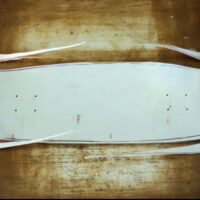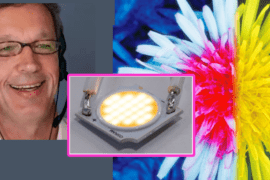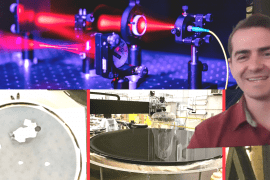Times have certainly changed in the “art nouveau” world which was synonymous with harmonizing the various elements of nature with design.
Say a warm hello to Canada’s craftsman de extraordinaire Daniel Szohatzky of GLARECUT. Daniel’s take on Tiffany Lamp shades includes staying as far away as possible from the mass produced tradition and adopt a more “International Style” which would be considered more linear and functional. Converting his hobby into a novel idea, Daniel specializes in handmade Tiffany shade lamps whose essential components are Glass, Tin, Copper and Brass out of his workshop in Budapest, Hungary.
We had a chance to catch up with the man himself and find out more about his inspiration, how he approaches the fabrication process and the challenges of building Tiffany lamps in 2015. Here’s what he had to say.

SS – What inspired you to create the project?
DS – I have always been very busy, juggling with different hobbies and projects, but in the last 3-4 years, I have managed to stick with Tiffany glasses. Focusing on these, I might have found the perfect hobby for myself. For years, I have had positive feedback from friends, and they have encouraged me to start a small company, and see, if this is something, which could work worldwide.

SS – What is your story behind it?
DS – Every single lamp has a story behind it. I believe it is very important, that I face everyday changes, and I do look at my old works, and think: ‘yes, I remember that time; it is a piece of me from the past, but today is different, I must look ahead’.

SS – What is the key innovation in the process of construction?
DS – There are many people making Tiffany lamps in the world, but most of the time, Tiffany makers think in Art Nouveau. When I started making Tiffany lamps, I have immediately started thinking in Bauhaus and Art Deco; Art Nouveau was never really my thing. So, I would say, the key innovation was to ‘secede’ from the standard Tiffany, Art Nouveau style.

SS – What are some of the biggest challenges that you have faced in constructing the lamps?
DS – I have faced many challenges in the past, and as the time flows, I put myself into more and more difficult challenges. I never liked making the same things over and over again, so something new might always be expected from me: new designs and innovation. Challenge is always the ‘translation’ process: having a design idea and implementing it to real life. The biggest challenge so far was a huge round ceiling lamp, which I had to make in a stainless steel frame for first, so that I can put the glass pieces around it.

SS – What does your process look like?
DS – Most of the time I start by making sketches, and after that, most of the time, I make paper models, to see, what changes need to be made for the final design. Sometimes I also make digital 3D models using different software.

SS – Would you say that the GLARECUT collection has evolved over multiple design styles?
DS – When I started making Tiffany lamps, I was much closer to the ‘traditional’ Tiffany style, but in Bauhaus and Art Deco. Arranging cut glasses into many small pieces and having a much more archaic design. Later on, as my technique developed, and as my style ‘simplified’, I started making minimalist lamps. So I would say, even the final GLARECUT collection has a history in the design development process, and even the final collection has been cut back seriously.
For more info, head over to Glarecut.






